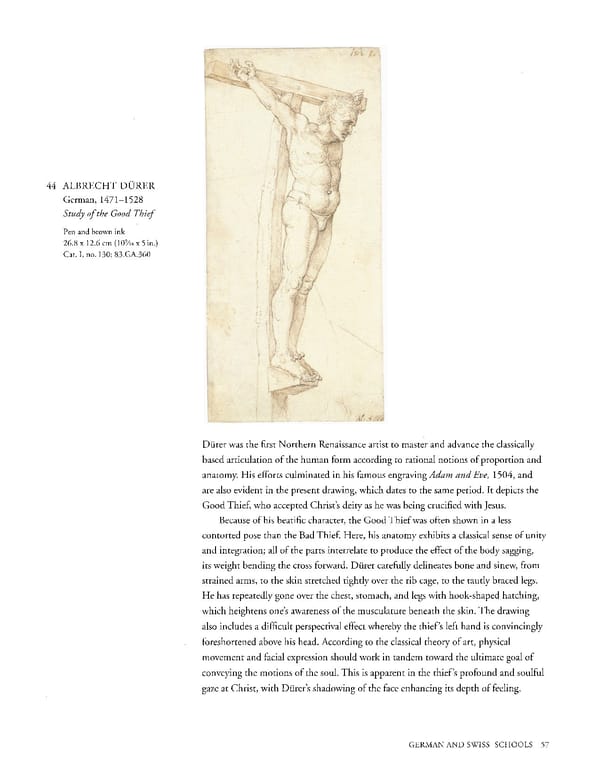44 ALBRECHT DURER German, 14711528 Study of the Good Thief Pen and brown ink 26.8 x 12.6 cm(10 9/16 x 5 in.) Cat. I, no. 130; 83.GA.360 Durer was the first Northern Renaissance artist to master and advance the classically based articulation of the human form according to rational notions of proportion and anatomy. His efforts culminated in his famous engraving Adam and Eve, 1504, and are also evident in the present drawing, which dates to the same period. It depicts the Good Thief, who accepted Christ's deity as he was being crucified with Jesus. Because of his beatific character, the Good Thief was often shown in a less contorted pose than the Bad Thief. Here, his anatomy exhibits a classical sense of unity and integration; all of the parts interrelate to produce the effect of the body sagging, its weight bending the cross forward. Durer carefully delineates bone and sinew, from strained arms, to the skin stretched tightly over the rib cage, to the tautly braced legs. He has repeatedly gone over the chest, stomach, and legs with hookshaped hatching, which heightens one's awareness of the musculature beneath the skin. The drawing also includes a difficult perspectival effect whereby the thief's left hand is convincingly foreshortened above his head. According to the classical theory of art, physical movement and facial expression should work in tandem toward the ultimate goal of conveying the motions of the soul. This is apparent in the thief's profound and soulful gaze at Christ, with Durer's shadowing of the face enhancing its depth of feeling. GERMAN AND SWISS SCHOOLS 57
 Masterpieces of the Getty Museum: Drawings Page 57 Page 59
Masterpieces of the Getty Museum: Drawings Page 57 Page 59